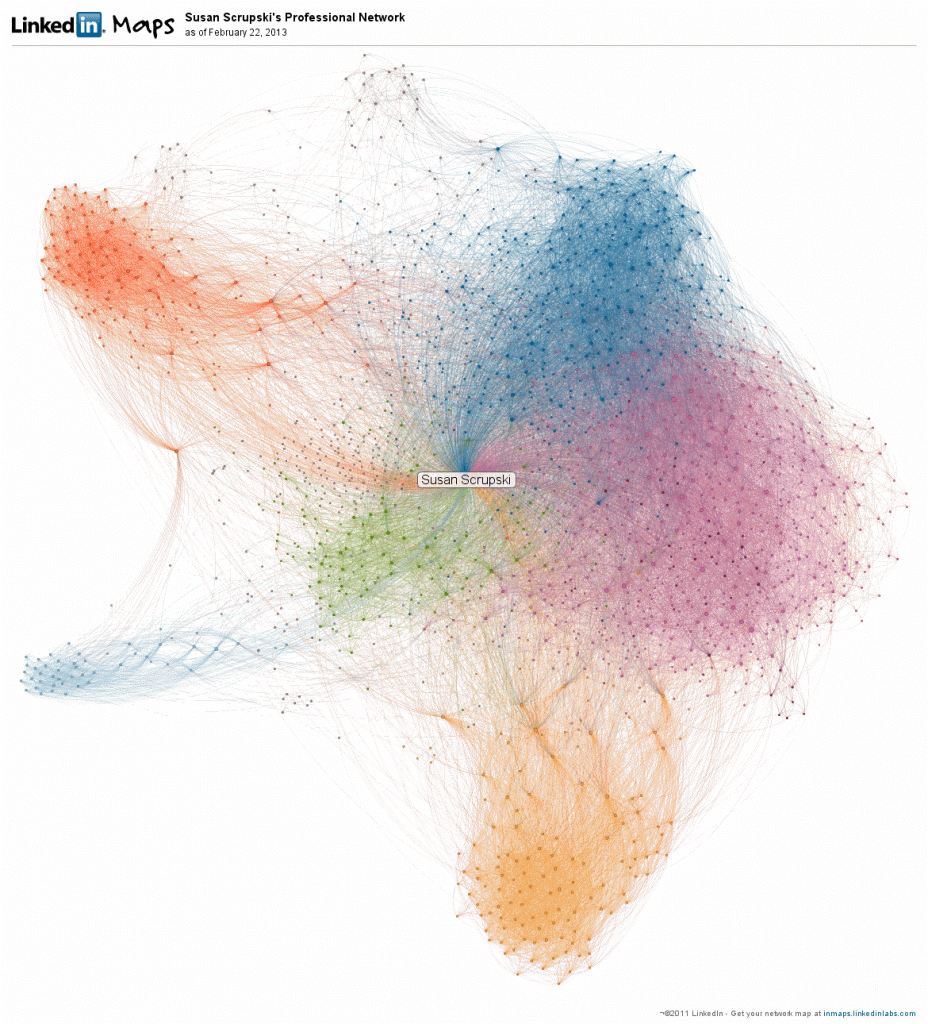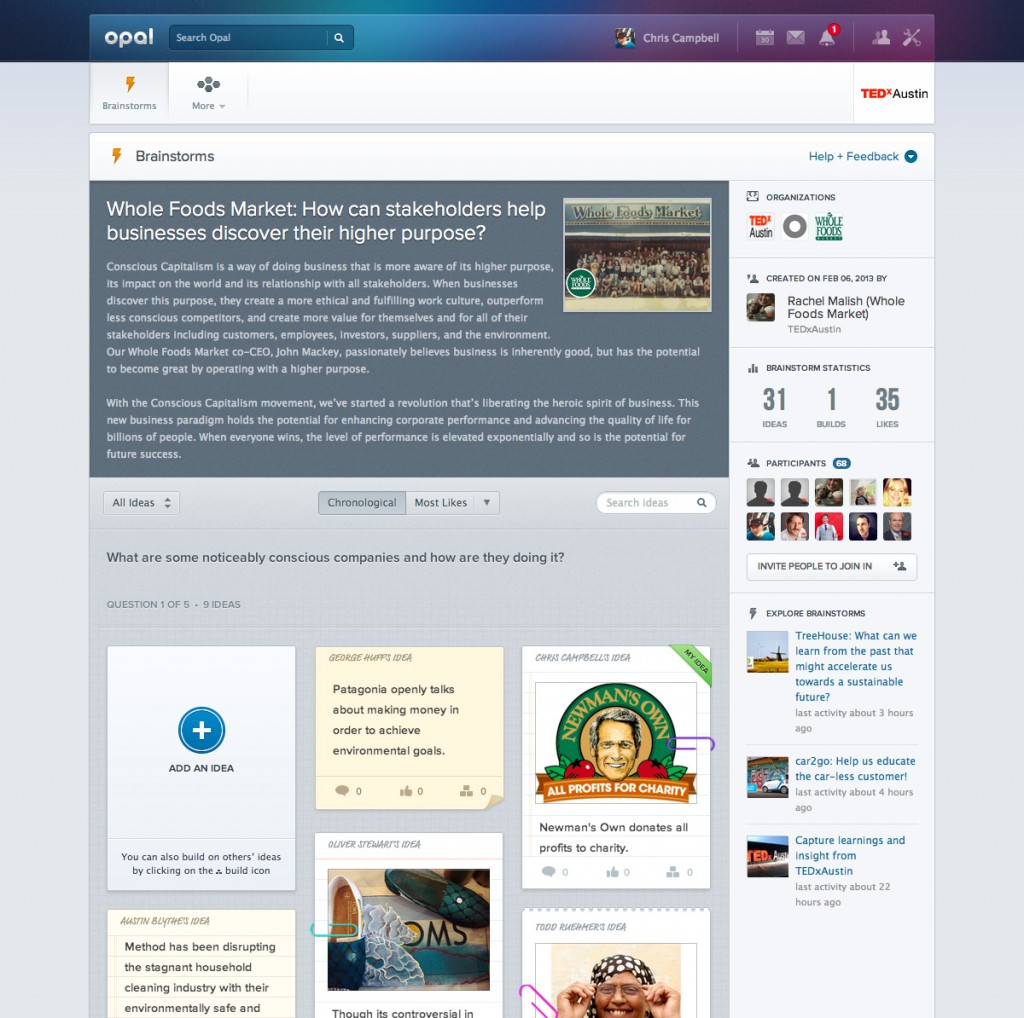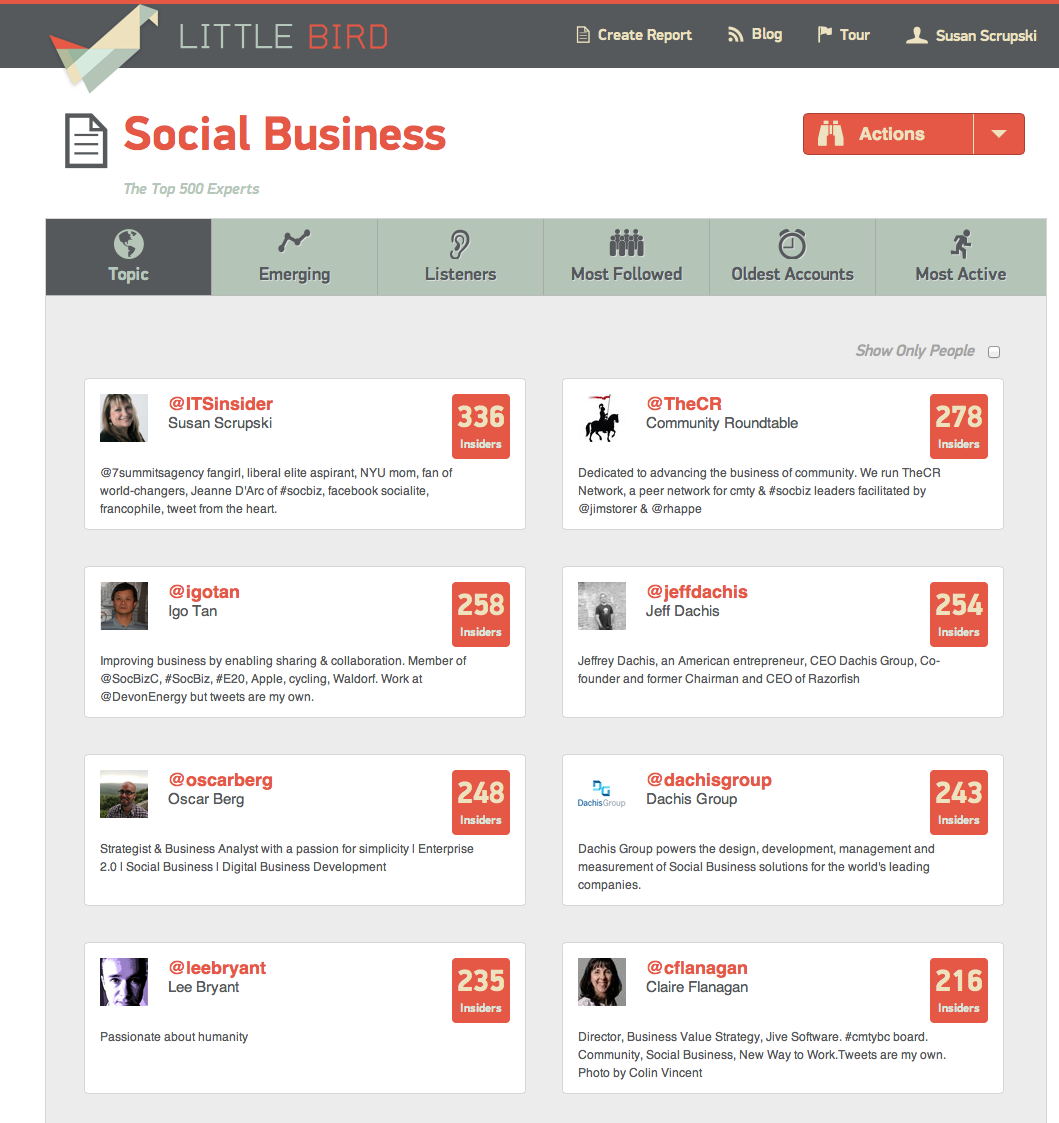Every social graph tells a story. In this sweeping visualization of nodes and connections, you can see the shape of my career history and relationships. This imprint of my LinkedIn social network was generated yesterday. You can see how new contacts and interrelationships jettisoned off from my base when I started to work at 7Summits. You can also see how one person in my network connected two clusters. You can also see how some of my “Austin” friends are also “Dachis Group” friends. The LinkedIn Maps tool will show you who is most influential in your network and how their connections overlap with yours. Definitely worth a download and a journey into your own path.
I have been invited to speak to an upper level undergraduate class at UT Austin, The associate professor is Dr. Jeffrey Treem teaches a course called, “Social Media and Organizations.” Among other things, I plan to talk to the students about the vital role our network plays in our career. It can serve as the very foundation of our success. Regardless of the company or the organization you are affiliated with at any moment, the real value in your work experience comes from the relationships you form. The reciprocal trust and value exchange you negotiate with each and every node in your network is the real asset of your career. Sure – credentials, knowledge, performance, achievements – all matter a great deal, but they pale in comparison to the power of your own personal network. Think carefully about your most significant career changes, chances are someone you know played an assist in your move.
I’ve always been fascinated with Social Network Analysis to draw conclusions and make predictions about organizational performance. The science is there, and I know that some of the larger social collaboration and community platform companies are doing impressive work in this area. Michael Wu, Chief Scientist at Lithium, is one of the more interesting veteran researchers to talk to on this subject. He has been applying social sciences and large-scale network analysis techniques to make actionable observations and predictions for the benefit of Lithium’s many customers for years. I know that Jive has expertise and some ongoing work in this area too. David Gutelius, whose company Proxima was acquired by Jive, is a lead in this area for Jive. While I was at IBM Connect last month, I saw a number of experimental research projects showcased in IBM’s Innovation Lab. Several of them held a great deal of promise. For instance, Community Player analyses how a certain event or community member influences behavior in a network. Community Player is being developed by researchers at IBM Research in Haifa. It originated as part of the EU-FPZ project ROBUST. System U focuses on exploring computational discovery of people’s intrinsic traits from the traces they leave on social media. The project focuses on profiling customers as individuals, yet on a very large scale. This research is being done at IBM Research – Almaden. And something that a few of us have been kicking around for a while is being explored at IBM called Work Marketplace. It’s a concept around crowdsourcing your network for work and projects.
Dr. Treem and his academic colleagues are working on studying this area. I’m really looking forward to diving into this more and learning as much as I can about the current state of this sort of organizational science. If you have sources (academic and commercial) on how SNA is being applied in enterprise networks, please let me know. It’s a key area that holds tremendous promise.







